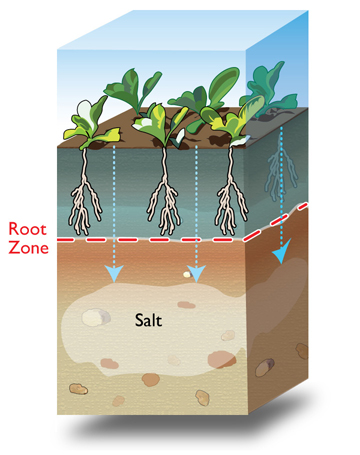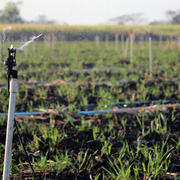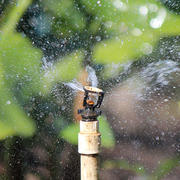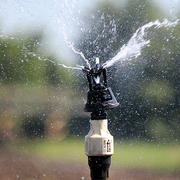
Soil salt is a major factor limiting crop growth, especially in germination and seedling stages.
When salt concentrations at the root depth of the soil are higher than inside the root cells, the soil will become drier than the crop is accustomed to and the crop will be unable to exert the necessary force for water absorption – which can eventually cause the crop to wilt and die.
Salts are added to the soil with each irrigation. When the build-up of soluble salts in the soil becomes excessive, the concentration of salts can be minimized by applying more water than needed by the crop during the growing season.
Infiltrating water will move the salts downward, through and below the root zone through deep percolation through a method known as leaching.
Irrigation uniformity is crucial for successful leaching. A uniform application ensures that salt does not accumulate in pockets across a field. High uniformity consistently moves salts beneath the root zone.
Xcel-Wobblers and mini-Wobblers are ideal applicators for leaching salts. Their unique off-center rotary action deflector gently delivers an instantaneous uniform pattern that can help prevent the formation of salt pockets.
Their low application rate also helps the soil absorb the water at a rate it can handle.
Drip systems can leave salt close to the crop and root zone, usually at the edge of the wetting pattern. Deep percolation can be attempted with drip systems, but this system still leaves substantial amounts of salt in the soil.

Drip systems frequently cause salinity issues due to their concentrated application.




